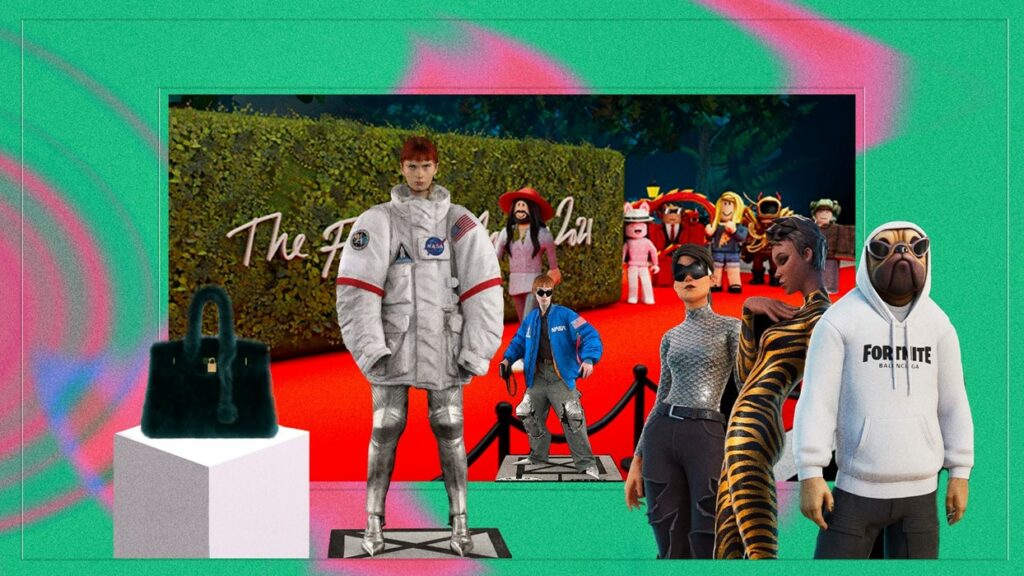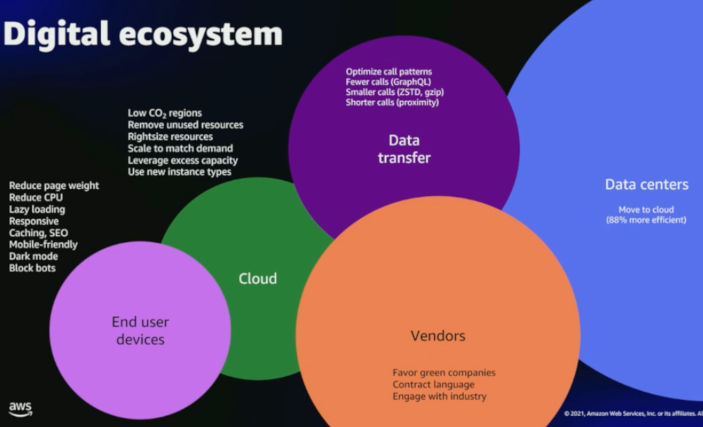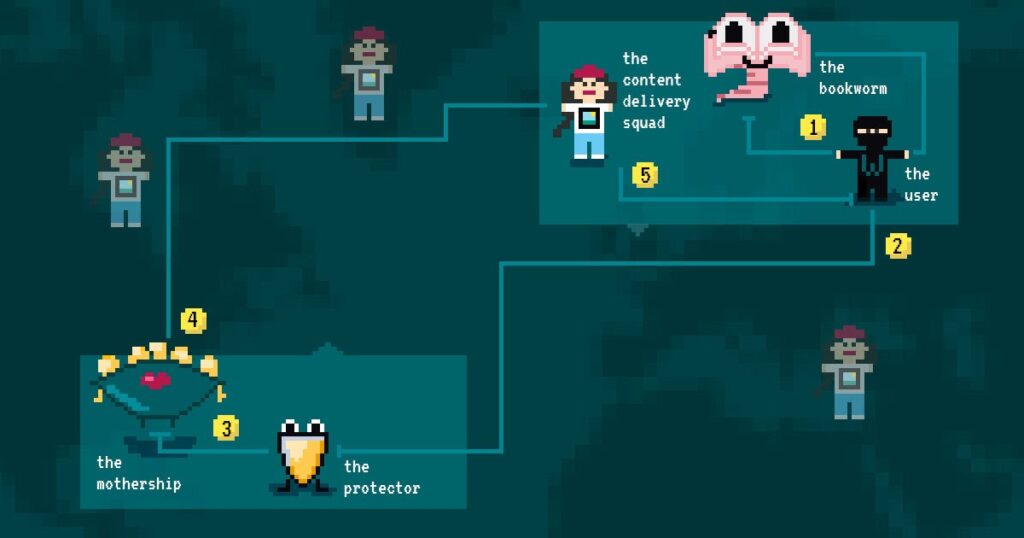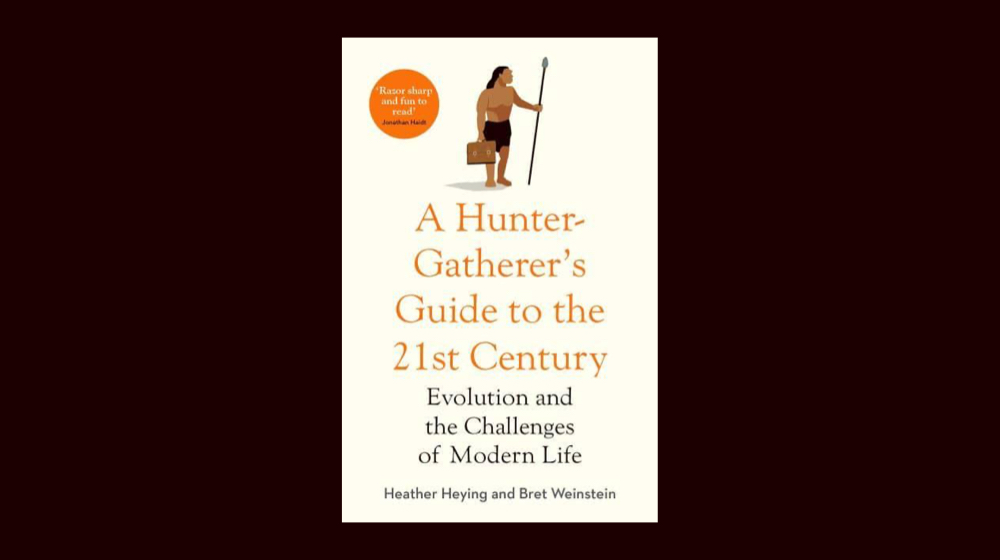|
Will digital clothing slow down fast fashion?
|
Hello and Happy New Year!
I hope you have had time to slow down and enjoy a proper break with your loved ones last month. I definitely did! As I write this, I’ve just been chatting with Gail from GAS Studio who told me that 2022 is going to be the year of healing. That feels like a good perspective to start the year.
This month I have been thinking about the Metaverse again as it seems like its going to be a significant development in the year ahead! If you are still unsure what exactly the Metaverse is, check out this clip of Tim Dillon trying to explain it to Joe Rogan. You’ll either laugh or cry.
I love having conversations with you on your thoughts about sustainability in tech, and anything you’re working on in this area, so do say hi if you would like to share anything.
Until next time,
– Tom Greenwood |
|
|
Top picks from the green web
|

Will the metaverse slow down fast fashion?
|
It’s not that long ago that we talked about the Metaverse and its potential digital carbon footprint in this newsletter. Whatever we think about it, it certainly isn’t going away.
This week I am giving a talk to the consumer trend forecasting company WGSN, and they sent me this interesting link from dressx.com about the carbon footprint of virtual clothes. DressX is not the first to make digital clothing but it is one of the first multi-brand retailers of digital fashion. Their mission is apparently to produce less, to produce more sustainably, and not to produce at all. This resonates with me because one of the reasons I got into digital design was in the hope of “dematerialising” physical products and services to eliminate their environmental impact.
As I have learned though, digital tech does have an environmental footprint and this is true for digital fashion too. DressX’s have published data comparing the impact of digital “clothes” to real clothes, showing that it is considerably less polluting than real world fashion. I have no doubt that this is true, but will people be satisfied with showing off their avatar’s sartorial style, or will they simply add a virtual wardrobe to their still ever expanding real life wardrobe? Only time will tell whether this is a sustainable step forward for the fashion industry, or whether digital fashion could, rather than solve one problem, simply add another.
|
|

The current state of sustainable architecture
|
As we closed off 2021, New Stack looked at the current state of green architectural practices (I mean servers, not buildings). Looking ahead, they suggest that the industry needs cloud providers to take responsibility in leading the way in energy efficiency and renewable energy, as well as customers designing software solutions to use this technology as efficiently as possible.
One of the big three, AWS, is well aware of the need to ensure the sustainability of the their offering, as outlined at their re:Invent 2021 event; Architecting for sustainability. AWS claim to have now overtaken Google as the leading corporate consumer of renewable energy. It’s exciting news to see AWS improving, although if we look at the bigger picture it also highlights how much of the worlds renewable energy supplies are being gobbled up by data centers.
As we posited in our last newsletter, perhaps we just need to use less.
|
|

A pixelated guide to digital sustainability
|
Inspired by Gerry McGovern’s book World Wide Waste, Anastasia Moneva from Whitespectre has created a comprehensive three-part series on Digital Sustainability. In part one, she looks at the environmental impact of digital technology and why we need to take action, exploring in the second part how we can design and build greener digital services, and in part three she shares her thoughts on the importance (and practicalities) of more sustainable web hosting.
Anastasia outlines this in much more detail than we usually see, supported by her absolutely delightful pixel graphics to illustrate her points.
|
|
|
Emissions from ICT could be worse than previously thought
|
Researchers at Lancaster University have published a new report highlighting that the common estimates of ICT accounting for 1.8%-2.8% of global greenhouse gas emissions may actually be too low. They state that prior estimates do not sufficiently account for the full lifecycle impacts of IT systems including the energy expended in manufacturing equipment; the carbon cost associated with all of their components and the operational carbon footprint of the companies behind them; the energy consumed when using the equipment; and also their disposal after they have fulfilled their purpose. They estimate that although there are many uncertainties, 2.1%-3.9% of global emissions is a more realistic estimate, making ICT more polluting than global aviation.
They also highlight that we should be careful in assuming that new technology will deliver reductions in emissions. They state:
“ICT has driven wide-ranging efficiency and productivity improvements, but, critically, global greenhouse gas emissions have risen inexorably despite all this.”
This report is a good reference point for us to gain a more realistic perspective of the role of ICT in solving the climate crisis.
|
|
|
|
|
“The greenest energy is the energy you don’t use”
|
Peter DeSantis
|
|

A Hunter Gatherers Guide to the 21st Century by Bret Weinstein and Heather Heying
|
I have a keen interest in evolutionary biology and believe that looking back at where we came from can teach us a lot about how we can be happy and healthy today and in the future. A Hunter Gatherer’s Guide to the 21st Century encourages us to look at the world through this evolutionary lens using a first principles approach, helping us understand how modern lifestyles and technology might impact us, positively or negatively.
Weinsten and Heying highlight that, although we are still very much evolving as a species, the pace of change in our societies is now outpacing our ability to adapt and this presents some challenges. Digital technology is a key driver of this accelerating change and so for those of us working in the digital sector, its important that we try to understand the evolutionary context of the things that we create.
How do new technologies relate to us as living, breathing, emotionally complex human beings, and how will they impact us collectively as a society? Thinking about why we evolved to be the way we are will help us use technology to create a positive future for ourselves and for humanity.
|
|
|
|
|
Other news from the green web
|
-
We made the decision to replace Google Analytics with Plausible as our standard analytics tool as it’s better for people and the planet.
-
I almost missed this link from November, when, writing at the time of COP26, Michelle at CSS Tricks shared her thoughts on setting a carbon budget at at the start of any website project.
-
Just before Christmas I recorded a podcast with Technologie (in English), talking about digital sustainability and B Corps.
-
I really enjoyed the 2021 Creatables conference, hosted this year by games programmer Kathrin Radtke, from the communications center on “Spaceship Earth”. The theme of the conference was creative sustainability and it included talks from the web, software and games industry, as well as live music from activist artist Diana Ezerex
I have to say that I love the amount of effort that has gone into theming this online event and its future retro vibe! My talk starts at 1hr 36 mins.
-
Robin Osborne discusses the synergy between performance and web sustainability and highlights that there is growing enthusiasm to integrate WebsiteCarbon.com into WebPageTest results.
-
The Climate Action Tech Salon that I took part in last month, talking about carbon footprint accounting for tech businesses, is now available to watch on YouTube.
-
I was interviewed on the Grype podcast, discussing the synergies between human centered design and environmentally focussed design.
|
|
|
Curiously Green is curated and written by Tom Greenwood and Rachael B.
|
|
|
|